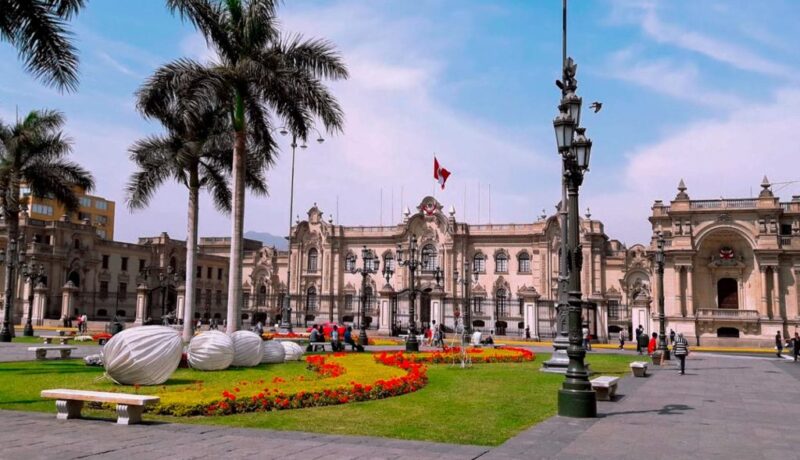
Lima, Peru: a city where you can experience history, gastronomy and adventure all in one place.
Lima, the capital of Peru, is one of the largest and most dynamic cities in South America. Located on the shores of the Pacific Ocean, the city combines a rich historical legacy with a vibrant modern lifestyle. Founded by the Spanish in 1535, the city’s historic centre has been declared a World Heritage Site by UNESCO and features impressive churches, colonial balconies and historic squares.
Table Of Content
- The history of Lima, the City of Kings
- The Spanish foundation
- Capital of the Viceroyalty of Peru
- Lima is a city with multiple faces
- Main tourist districts of Lima
- Miraflores is the tourist heart of Lima
- Outdoor spaces and spectacular views
- Culture and history
- Gastronomy and nightlife.
- Shopping and entertainment
- Safety and Accessibility
- These are some of the highlights that you can visit in Miraflores.
- Barranco is the bohemian and artistic district of Lima
- It is a neighborhood with an artistic soul.
- The iconic Puente de los Suspiros (Bridge of Sighs) is the district’s most recognizable symbol.
- Heritage and Architecture
- Nightlife and Gastronomy
- Landscapes and Public Spaces
- These are some of Barranco’s must-see places.
- The Historic Center of Lima is the colonial cradle of Peru.
- The main attractions of the historic center are
- Culture, religion, and tradition
- Recommendations for your visit
- Take a trip back in time in the heart of Lima.
- San Isidro: elegance, business and nature in Lima.
- Business Center and Financial District
- The district also has green areas and urban parks.
- Culture, art, and architecture abound.
- High-level gastronomy.
- Some of the most recommended places in San Isidro are
- Why visit San Isidro?
- Pueblo Libre is a living history museum and a traditional district of Lima.
- Pueblo Libre is a historic district.
- It has a traditional and quiet atmosphere.
- Creole gastronomy and a local ambiance.
- Living Culture
- Why should you visit Pueblo Libre?
- Chorrillos: History, Sea, and Lima Tradition
- It is a district with history.
- Morro Solar.
- Fishing and coastal identity are important here.
- Popular beaches
- Nature and Protected Areas
- Gastronomy with a taste of the sea
- These are some of the most recommended places in Chorrillos
- Why visit Chorrillos?
- What activities are there to do in Lima?
- Lima Museums: A Journey Through History, Art, and Memory
- Larco Museum (Pueblo Libre)
- The National Museum of Archaeology, Anthropology, and History of Peru is located in Pueblo Libre.
- Lima Art Museum (MALI)
- The LUM (Place of Memory, Tolerance, and Social Inclusion) is located in Miraflores.
- Amano Museum, Miraflores
- Mario Testino Museum (MATE) – Barranco
- Pedro de Osma Museum in Barranco
- The Museum of Contemporary Art (MAC) is located in Barranco
- Natural History Museum in Jesús María.
- Nicolini Museum, La Molina
- The archaeological sites of Lima
- Huaca Pucllana in Miraflores
- Huaca Huallamarca in San Isidro
- The Huaca Mateo Salado is located in Pueblo Libre
- Puruchuco – Ate
- Pachacamac-Lurin
- Cajamarquilla, San Juan de Lurigancho
As well as its cultural richness, Lima is internationally renowned for its cuisine, widely regarded as some of the best in the world. A city of contrasts, it offers modern cafés, urban art and boardwalks overlooking the sea in its coastal districts, such as Miraflores and Barranco, as well as a lively nightlife. Thanks to its strategic location and international airport, it is also an ideal starting point for exploring the entire country.
Lima is much more than just a stopover on the way to Machu Picchu; it is a fascinating destination offering history, flavours, landscapes and unique experiences.
The history of Lima, the City of Kings
Pre-Hispanic Origins
Before the arrival of the Spaniards, the territory now occupied by Lima was inhabited by ancient cultures. For over two thousand years, various civilizations have settled in the fertile valley of the Rímac River. Among them were the Lima and Ichma cultures, followed by the Incas who incorporated the region into the Tahuantinsuyo, or the Inca Empire.
Evidence of this ancient past can be seen in the numerous archaeological remains still present in the city, such as the Huaca Pucllana in Miraflores, the Huaca Huallamarca in San Isidro, and the Pachacamac sanctuary located south of the city.
The Spanish foundation
On January 18, 1535, Spanish conquistador Francisco Pizarro founded the city, naming it Ciudad de los Reyes in honor of the Three Kings and the Spanish monarchy. The location in the Rímac Valley near the sea facilitated trade and communication with other parts of the empire.
From the beginning, Lima was designed to be an orderly, modern city with a checkerboard-style layout, which was typical of Spanish colonial cities.
Capital of the Viceroyalty of Peru
Lima was designated the capital in 1543 and became the most important political, economic, military, and religious center of South America. Much of the continent was governed from there. Its port, Callao, was essential for trade with Spain and other viceroyalties.
The magnificent churches, convents, palaces, and plazas that comprise the historic center today flourished during this period. Key institutions were founded:
- The Universidad Nacional Mayor de San Marcos (1551), the oldest in the Americas, was established.
- The Royal Court of Lima was also established.
- So was the Tribunal of the Holy Office of the Inquisition.
- The city became a center of art and knowledge, developing a strong Creole identity.
The 19th century brought great changes. Following several regional independence struggles, Lima witnessed Peru’s proclamation of independence on July 28, 1821, led by Argentine General José de San Martín. Subsequently, Simón Bolívar’s liberating forces secured independence over the next few years.
During this period, Lima ceased being a viceroyalty and became the capital of the Republic of Peru. The nineteenth century was also marked by conflicts, such as the War of the Pacific (1879–1883) with Chile. During this war, Chilean troops temporarily occupied the city.
Today, Lima is a megacity of over 10 million people that blends a colonial past with a modern, cosmopolitan lifestyle. It hosts important international events, including film festivals, gastronomic fairs, art exhibitions, and global business conferences. Its world-renowned cuisine attracts thousands of tourists every year.
In 1991, UNESCO designated its historic center a World Heritage Site in recognition of its historical, architectural, and cultural significance.
Lima is a city with multiple faces
It’s not just a stopover on the way to Machu Picchu; it’s a city that tells stories through its streets, offers flavors through its cuisine, and showcases diversity through its people. From ancient pre-Inca huacas to modern coastal districts, Lima is a place where the past and present coexist at every turn.
Main tourist districts of Lima
Lima, the capital of Peru, is divided into several districts, each with its own distinct character and attractions. Some districts stand out to tourists for their safety, history, cultural life and entertainment options.
Miraflores is the tourist heart of Lima
Miraflores is one of Lima’s most visited and beloved districts, known for its perfect combination of modernity, nature, and culture. Located on the shore of the Pacific Ocean, Miraflores offers tourists a vibrant and safe experience with a wide variety of attractions to suit all tastes.
Outdoor spaces and spectacular views
One of Miraflores’ greatest charms is its extensive coastline, which features cliffs offering breathtaking panoramic views of the sea. The Malecón de Miraflores is an ideal place for walking, jogging, or cycling while enjoying parks, green spaces, and viewpoints, such as the famous Parque del Amor. This park is decorated with a colorful mural and the sculpture El Beso (The Kiss).
Culture and history:
Although Miraflores is modern, it does not forget its roots. In the heart of the district is the Huaca Pucllana, a pre-Hispanic adobe archaeological site offering guided tours, cultural events, and insights into the city’s ancestral past.
Gastronomy and nightlife.
Miraflores is a paradise for food lovers. You can find everything from traditional cevicherías to internationally renowned gourmet restaurants here. The nightlife is also vibrant, with numerous bars, pubs, and discos that fill the area with atmosphere.
Shopping and entertainment:
Shopping enthusiasts will enjoy the Larcomar shopping mall, which is located on the cliffs overlooking the sea. It has stores of national and international brands, movie theaters, and event spaces.
Safety and Accessibility
With well-lit streets and frequent police presence, Miraflores is one of the safest districts in Lima. This makes it an ideal place for tourists who want to explore the city with peace of mind.
These are some of the highlights that you can visit in Miraflores.
Kennedy Park features a central plaza surrounded by cafés and craft markets.
The Malecón Cisneros and the Malecón de la Reserva offer beautiful seaside strolls through green spaces adorned with sculptures.
The Huaca Pucllana is an archaeological site and museum.
Larcomar is an oceanfront shopping mall.
The Parque del Amor is a romantic space with stunning views and public art.
With its blend of history, nature, culture, and modernity, Miraflores is the perfect place to experience Lima with all your senses.
Barranco is the bohemian and artistic district of Lima
It is one of the most emblematic and charming districts, known for its artistic and romantic atmosphere. Located a few minutes south of Miraflores, Barranco is a place where art, history, and nightlife converge, offering a unique experience for locals and tourists alike.
It is a neighborhood with an artistic soul.
Barranco is a haven for artists, musicians, writers, and other creatives. Its colorful cobblestone streets are adorned with murals and graffiti reflecting the cultural identity of Lima and Peru. Contemporary art galleries and workshops are around every corner, turning the district into an open-air museum.
The iconic Puente de los Suspiros (Bridge of Sighs) is the district’s most recognizable symbol.
The bridge is the district’s most recognizable symbol. This wooden bridge, surrounded by greenery and antiques, invites visitors to walk in silence and make a wish, according to local legend. At night, the bridge and its surroundings are illuminated, creating a romantic and magical atmosphere.
Heritage and Architecture
Barranco boasts republican and late republican architecture, including old mansions with carved wooden balconies and colonial details that evoke bygone eras. Notable museums include the Pedro de Osma Museum, which houses an impressive collection of viceregal art.
Nightlife and Gastronomy
This district is famous for its vibrant nightlife. Bars with live music, pubs, and fine dining restaurants coexist with cozy cafés and artisanal ice cream parlors. The area is ideal for tasting modern Peruvian cuisine and traditional cocktails, such as Pisco Sour.
Landscapes and Public Spaces:
Barranco has direct access to the ocean and offers beautiful viewpoints and boardwalks where you can enjoy spectacular sunsets. The Malecón de Barranco is perfect for strolling while taking in the views of the Pacific Ocean. The Bajada de Baños connects the center of the district with the beach.
These are some of Barranco’s must-see places.
Bridge of Sighs:
Pedro de Osma Museum.
Bajada de Baños
Barranco Square
Municipal Park
Boardwalks and viewpoints overlooking the sea.
Galleries and artistic cafés.
Barranco is undoubtedly the ideal district for those looking for a relaxed, cultural, and lively atmosphere where every corner inspires and delights.
The Historic Center of Lima is the colonial cradle of Peru.
Also known as the Cercado de Lima, it is where the city was born and where its most important architectural, religious, and cultural treasures are located. Founded in 1535 by conquistador Francisco Pizarro, this area is the colonial heart of Peru’s capital city and one of the most valuable historical centers in Latin America.
In 1991, UNESCO declared it a World Heritage Site for preserving its original urban layout and the numerous historic buildings still standing.
The main attractions of the historic center are:
Plaza Mayor de Lima
This is the city’s main square and the site where Lima was founded. It is surrounded by important colonial buildings, such as:
– The Cathedral of Lima.
– The Government Palace.
– The Municipal Palace
The colonial wooden balconies that adorn its facades.
The Cathedral of Lima
Built in the 16th century, it is one of the country’s most important temples. Inside are the remains of Francisco Pizarro.
The Convent of San Francisco
It is famous for its catacombs, old library, and baroque architecture. It is one of the most visited places in the city center.
Jirón de la Unión
This historic, commercial pedestrian street connects the Plaza Mayor with the Plaza San Martín. It connects the Plaza Mayor with the Plaza San Martín.
The Museum of the Inquisition
Located in the former Tribunal of the Holy Office, the museum offers a glimpse into Peru’s dark Inquisition period.
Culture, religion, and tradition
The historic center is home to more than 600 monuments, including churches, colonial mansions, museums, and convents. It was an important center of Catholicism in the Americas, and many of its churches still house relics, altars, and original works of art.
Recommendations for your visit:
The area is ideal for walking tours, especially during the day.
There are free and paid guided tours that explain the history of each place.
Be sure to try a traditional dessert or coffee in one of the historic buildings converted into cafés.
Bring your camera and comfortable clothes, and be prepared to see impressive architecture around every corner.
Take a trip back in time in the heart of Lima.
Visiting the historic center of Lima is like traveling back several centuries. The streets, balconies, and squares narrate the history of colonial and republican Peru. Every detail mixes solemnity, living culture, and tradition.
San Isidro: elegance, business and nature in Lima.
San Isidro is one of the most exclusive and modern districts of the Peruvian capital. Known as the financial center of the Peruvian capital, it also stands out for its tranquility, contemporary architecture, high-end residential areas and abundant green areas.
This district perfectly combines the business with the cultural and natural, making it an excellent choice for both business travelers and tourists seeking a sophisticated experience.
Business Center and Financial District:
Most of the country’s corporate offices, banks, consulates, and embassies are located in San Isidro. This area is the economic heart of Lima, where modern skyscrapers and five-star hotels welcome business travelers and international conventions.
The district also has green areas and urban parks.
Despite its business-oriented nature, San Isidro is one of the districts with the most natural spaces in the city. The most emblematic of these is El Olivar Forest.
El Olivar Forest is a historic park with more than 1,500 olive trees brought from Spain in the 17th century.
This historic park contains more than 1,500 olive trees that were brought from Spain in the 17th century.
The park is ideal for walking, relaxing, or having a picnic.
The park is surrounded by old colonial mansions, galleries, libraries, and quiet cafés.
Culture, art, and architecture abound.
San Isidro is also a growing cultural center. It houses important spaces, such as:
The Marina Núñez del Prado Art Museum, which features sculptures and contemporary Peruvian art, is one of them.
There are also art galleries, cultural centers, and events in squares and parks.
In terms of architecture, the district features modern towers, elegant residences, republican buildings, and period mansions.
High-level gastronomy.
San Isidro has an excellent culinary scene. Several of the best restaurants in Lima are located here, offering gourmet cuisine, contemporary Peruvian dishes, and innovative culinary fusions.
There are also European-style cafés and pastry shops that are ideal for meetings or for taking a break during your visit.
Some of the most recommended places in San Isidro are:
Bosque El Olivar:
Roosevelt Park (also known as “Parque de la Felicidad”).
The Marina Núñez del Prado Museum.
The Rivera Navarrete financial area.
The San Isidro Golf Club is an exclusive area with unique views.
Why visit San Isidro?
San Isidro is the ideal place to experience a modern, elegant, and quiet side of Lima. It is perfect for:
Staying with all the comforts.
Strolling through well-kept parks.
Enjoying good food and art.
Shopping in boutiques.
Attending cultural events.
Pueblo Libre is a living history museum and a traditional district of Lima.
One of the most traditional districts of Lima, Pueblo Libre is known for its peaceful atmosphere, rich history, and strong identity as a part of Lima. Originally named Magdalena Vieja, the district was renamed “Pueblo Libre” by José de San Martín in recognition of its inhabitants’ patriotic spirit during Peru’s struggle for independence.
Pueblo Libre is a historic district.
Pueblo Libre is home to many reminders of Peru’s colonial and republican past. With its important museums and historic mansions, it is an ideal place for people interested in learning about the country’s culture and history.
The National Museum of Archaeology, Anthropology, and History of Peru, the oldest museum in the country, houses an impressive collection of pre-Hispanic, colonial, and republican artifacts.
The Casa de Bolívar, part of the museum, was the residence of Simón Bolívar, the Liberator, and was the site of significant historical events.
The Larco Museum is one of the most renowned museums in Peru. It exhibits pre-Columbian art, erotic ceramics, and gold and silver treasures. The museum also has a charming restaurant and gardens.
It has a traditional and quiet atmosphere.
Unlike other, more hectic districts, Pueblo Libre maintains a peaceful, residential atmosphere. With its tree-lined streets, squares, and old mansions, it’s the perfect place to stroll and experience the true spirit of Lima.
The historic center of the district is Plaza Bolivar, surrounded by the Matriz church and old buildings.
The parks and gardens are ideal for relaxing or spending time with family.
Creole gastronomy and a local ambiance.
Pueblo Libre is an excellent place to experience traditional Peruvian cuisine. It has several peñas criollas (restaurants featuring home cooking) and historical sites, such as:
El Bolivariano is famous for its Creole buffet, pisco sour, and historic atmosphere.
The Antigua Taberna Queirolo, founded in the 19th century, is perfect for tasting an artisanal pisco or a butifarra limeña sausage.
Living Culture
Pueblo Libre is a district where popular culture and traditional Lima customs are still alive. Religious festivities, civic parades, and gastronomic fairs are held in its squares throughout the year.
Why should you visit Pueblo Libre?
Pueblo Libre is a charming district known for its simplicity, warmth, and deep connection to the national identity. It is an essential destination for those who want to experience the most authentic and cultural side of Lima.
Chorrillos: History, Sea, and Lima Tradition
This coastal district in southern Lima boasts natural landscapes, military history, popular beaches, and a strong local identity. Originally founded in 1857 as a seaside resort for Lima’s aristocracy, Chorrillos has maintained its traditional character, fishing culture, and historical and ecological significance.
It is a district with history.
It was the scene of one of the harshest episodes of the War of the Pacific (1879–1884), when it was burned and looted by Chilean troops. In honor of its courage, it is now known as the “Heroic District.”
One symbol of this history is:
Morro Solar.
This rocky elevation offers panoramic views of the Lima coast.
On top of Morro Solar stands the Cristo del Pacífico, a 37-meter-high monument.
Visitors can also explore the planetarium, the site museum, and the monument to the heroes of the Battle of San Juan.
Fishing and coastal identity are important here.
Chorrillos is known for its fishing tradition. At Fishermen’s Cove, you can watch the fresh fish arrive from the sea or enjoy it at local restaurants.
Popular beaches:
Agua Dulce is an ideal beach for families with amenities and restaurants.
La Herradura is a historic beach frequented by surfers.
Pescadores is small but traditional.
During the summer, these beaches receive a large influx of residents from all corners of Lima.
Nature and Protected Areas
One of Chorrillos’ greatest treasures is the Pantanos de Villa Ecological Reserve, a coastal wetland that is home to over 200 bird species, many of which are migratory. It’s the perfect place for nature lovers, photographers, and wildlife observers.
Gastronomy with a taste of the sea
Chorrillos offers traditional cevicherías, seafood restaurants, and huariques, or fishing places, famous for their exquisite flavor. Some are located right on the seafront, where you can enjoy fresh fish while taking in an unforgettable view of the Pacific Ocean.
These are some of the most recommended places in Chorrillos:
Morro Solar and the Christ of the Pacific Statue.
The Planetarium and On-Site Museum.
Fishermen’s Cove:
Agua Dulce and La Herradura beaches.
Villa Marshes.
Traditional seafood restaurants.
Why visit Chorrillos?
Enjoy the sea without leaving Lima!
Learn about a key part of Peruvian history.
To sample fresh fish and seafood.
Watch an unforgettable sunset from Morro Solar.
The district of Chorrillos preserves the essence of Peru’s coast, offering visitors a glimpse of the sea, tradition, flavor, and history. Visiting reveals another side of Lima—a more popular, authentic, and lively one.
What activities are there to do in Lima?
Lima has a rich history dating back to the Inca Empire, and the city is full of ancient sites worth visiting. The historic heart of the city is the Plaza de Armas, surrounded by impressive colonial buildings such as the Lima Cathedral. Other notable historical sites include the ancient adobe pyramid, Huaca Pucllana, in Miraflores; the Monastery of San Francisco, which is famous for its catacombs; and the Larco Museum, which has an extensive collection of pre-Columbian art.
Lima is also a must-see destination for lovers of Peruvian cuisine. The city boasts a wide variety of traditional restaurants where you can sample typical dishes such as ceviche, lomo saltado, and papa a la huancaína. Lima is also renowned for its innovative fusion cuisine, blending Peruvian ingredients with international culinary techniques to offer unique dining experiences at world-class restaurants.
In addition to its historic sites and exquisite cuisine, Lima is famous for its beautiful beaches. The Costa Verde, a long coastline with cliff-lined beaches, rocky shores, and lush vegetation, is ideal for those looking to relax by the sea. The Miraflores district, with its wide range of hotels, restaurants, and shops, is one of the most popular among beachgoers. Visitors can enjoy sports such as surfing, paddleboarding, and kayaking here, as well as experience the waves of the Pacific Ocean.
Lima Museums: A Journey Through History, Art, and Memory
Lima is a city with multiple public cultural centers where ancient pre-Columbian cultures, contemporary art, photography, recent history, and science converge. Below is an improved, comprehensive selection:
Larco Museum (Pueblo Libre):
Theme: Pre-Columbian Art
Description: Located in an elegant 18th-century colonial mansion, this museum houses one of the most important collections of pre-Columbian art in Latin America. It features more than 45,000 archaeological pieces, many of which are from the Moche, Chimú, and Nazca cultures, among others. Notable features include the famous erotic ceramics room and the open storage rooms, where visitors can observe the preservation of the heritage.
Ideal for: Those interested in ancient history, archaeology, and photography.
Recommended visit duration: 2 to 3 hours.
The National Museum of Archaeology, Anthropology, and History of Peru is located in Pueblo Libre.
Theme: History and Culture of Peru.
Description: This is the oldest and most comprehensive museum in the country. Visitors can see iconic pieces such as the Raimondi Stele, the Tello Obelisk, and mummies from ancient cultures. The museum also has rooms dedicated to the colonial and republican periods, including the personal belongings of heroes such as Simón Bolívar and José de San Martín.
Ideal for: Those looking for a comprehensive tour of Peruvian history.
The tour lasts 2 hours or more, depending on your interests.
Lima Art Museum (MALI):
Downtown Lima
Theme: Peruvian Art from All Eras
Description: MALI boasts one of the most extensive collections of Peruvian art, ranging from pre-Columbian to contemporary pieces. The museum is located in the beautiful historic Palacio de la Exposición building. In addition to its permanent exhibitions, the MALI regularly hosts temporary exhibitions by international and local artists.
Ideal for: Art enthusiasts in general.
Duration: 1.5 to 2 hours.
The LUM (Place of Memory, Tolerance, and Social Inclusion) is located in Miraflores.
Theme: “Internal Armed Conflict in Peru (1980-2000)”
Description: This modern museum is dedicated to preserving the memory of victims of terrorism and political violence in Peru. It features testimonies, photographs, documents, and audiovisuals from that period with a focus on human rights and reconciliation.
Ideal for: People interested in recent history and human rights.
Duration: 1.5 hours.
Amano Museum, Miraflores:
Theme: Pre-Columbian Textiles
Description: This small, private museum houses one of the finest collections of ancient textiles from the Paracas and Chancay cultures. The pieces are well-preserved and displayed in great detail. There are also ceramics and other archaeological artifacts.
Ideal for: Researchers and enthusiasts of textiles and archaeology.
Duration: One hour.
Mario Testino Museum (MATE) – Barranco:
Theme: Fashion and Portrait Photography
Description: This museum is dedicated to the renowned Peruvian photographer Mario Testino. It features celebrity portraits, fashion editorials, and a collection called “Alta Moda,” which showcases traditional Andean clothing from an artistic perspective. The museum is housed in a restored 19th-century mansion.
Ideal for: Lovers of photography, fashion, and visual art.
Duration: One hour.
Pedro de Osma Museum in Barranco
Theme: Peruvian Viceregal Art
Description: This museum houses paintings, sculptures, furniture, and religious objects from the 17th and 18th centuries. The museum is located in a former French-style mansion surrounded by gardens. The collection is notable for its quality and excellent state of preservation.
Ideal for: Lovers of colonial art and religious history.
Duration: 1.5 hours.
The Museum of Contemporary Art (MAC) is located in Barranco
Theme: Modern and Contemporary Art
Description: The museum features temporary exhibitions by Peruvian and international artists. The museum has spacious rooms, gardens, and well-lit galleries. It’s an ideal place to view installations, sculptures, contemporary paintings, and conceptual art.
Ideal for: People interested in the latest and most experimental art.
Recommended duration: One hour.
Natural History Museum in Jesús María.
Theme: Natural Sciences
Description: This museum, managed by the National University of San Marcos, displays dinosaur skeletons, marine fauna, stuffed animals, fossils, and minerals. It is very popular with students and families.
Ideal for: Children, students, and science enthusiasts.
Duration: 1.5 hours.
Nicolini Museum, La Molina:
Theme: Antique Cars
Description: This museum houses one of the most important private collections of classic cars in Latin America. The vehicles, which date back to the early 20th century, are perfectly restored and organized by era.
Ideal for: Car and vintage enthusiasts.
Duration: One hour.
The archaeological sites of Lima
Discover the ancient history hidden in the heart of Lima.
Not only is Lima a modern and cosmopolitan city, it is also one of the capitals with the largest number of huacas and archaeological complexes on the continent. These sites, which range from adobe pyramids to ceremonial centers and pre-Incan palaces, allow us to connect with the ancient cultures that inhabited Peru’s central coast.
Huaca Pucllana in Miraflores
Located in the tourist district of Miraflores, this site was built between 200 and 700 CE by the Lima culture. This large adobe pyramid is built in a stepped structure and was used as a ceremonial and administrative center. During excavations, archaeologists have found tombs, ceramics, textiles, and human remains.
What to see:
Main pyramid.
Site museum.
Guided tours are offered day and night.
There is also a restaurant with views of the archaeological site.
Huaca Huallamarca in San Isidro
This well-preserved archaeological site stands out for its pyramidal shape and for being surrounded by modern buildings. It was primarily used for ceremonies and funerals. Mummies, offerings, and everyday tools have been discovered here.
What to see:
A museum with funerary objects.
The pyramidal structure is accessible.
There are occasional educational activities.
The Huaca Mateo Salado is located in Pueblo Libre
This little-known yet highly valuable complex consists of five interconnected pyramids. An important ceremonial center of the Ichma culture, it later became part of the Inca Empire. Today, the site has been partially restored and offers walking trails.
What to see:
Adobe pyramids.
Murals and the remains of Qhapaq Ñan paths.
Free guided tours are offered on certain days.
Puruchuco – Ate:
Located east of Lima, Puruchuco was an important administrative center during the Inca period. The complex includes a palace, cemeteries, storage rooms, and alleys. It is especially notable for the thousands of mummies found in the surrounding area.
What to see:
The restored curaca palace.
On-site museum.
View of the Rímac Valley.
Pachacamac-Lurin
This is the largest and most spectacular archaeological site in Lima. For centuries, it was a key religious center, first for the Lima culture, then for the Wari, the Ichma, and finally, the Incas. Pilgrims from all over the Andes came to worship the god Pachacámac here.
What to see:
The Temple of the Sun and the Painted Temple.
Ramped pyramids.
There is also a modern museum with more than 6,000 artifacts.
Enjoy ocean views from the top of the temple.
Cajamarquilla, San Juan de Lurigancho:
This is one of the largest adobe cities on the Peruvian coast. Built by the Lima culture, it was later occupied by the Wari. Recent excavations have revealed surprising burials, such as that of a mummified child wrapped in ropes.
What to see:
Pre-Hispanic urban structures.
Streets, plazas, and warehouses.
You can also see archaeological excavations in progress.
Recommendations for Visitors:
Clothing and Footwear: Wear comfortable shoes, sunscreen, and a hat.
Guides: Take advantage of guided tours, which provide historical information and archaeological details.
Hours: Many sites are open Tuesday through Sunday. Some offer free admission on Sundays for Peruvian citizens.
Respect: Do not climb on protected structures or remove archaeological fragments.
“Discover Peru, a destination that blends ancient history with unique hospitality”


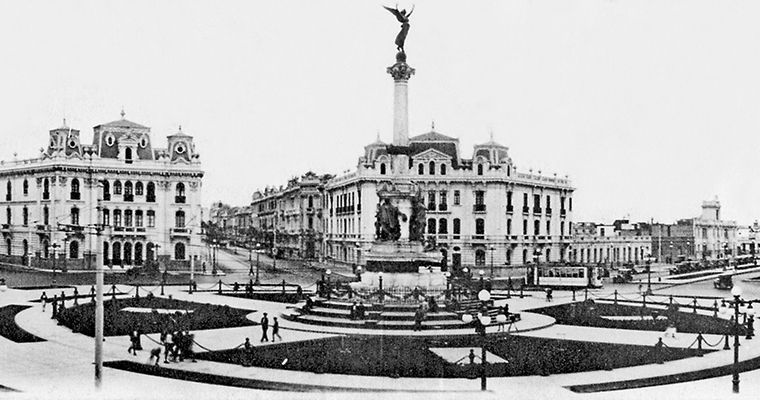
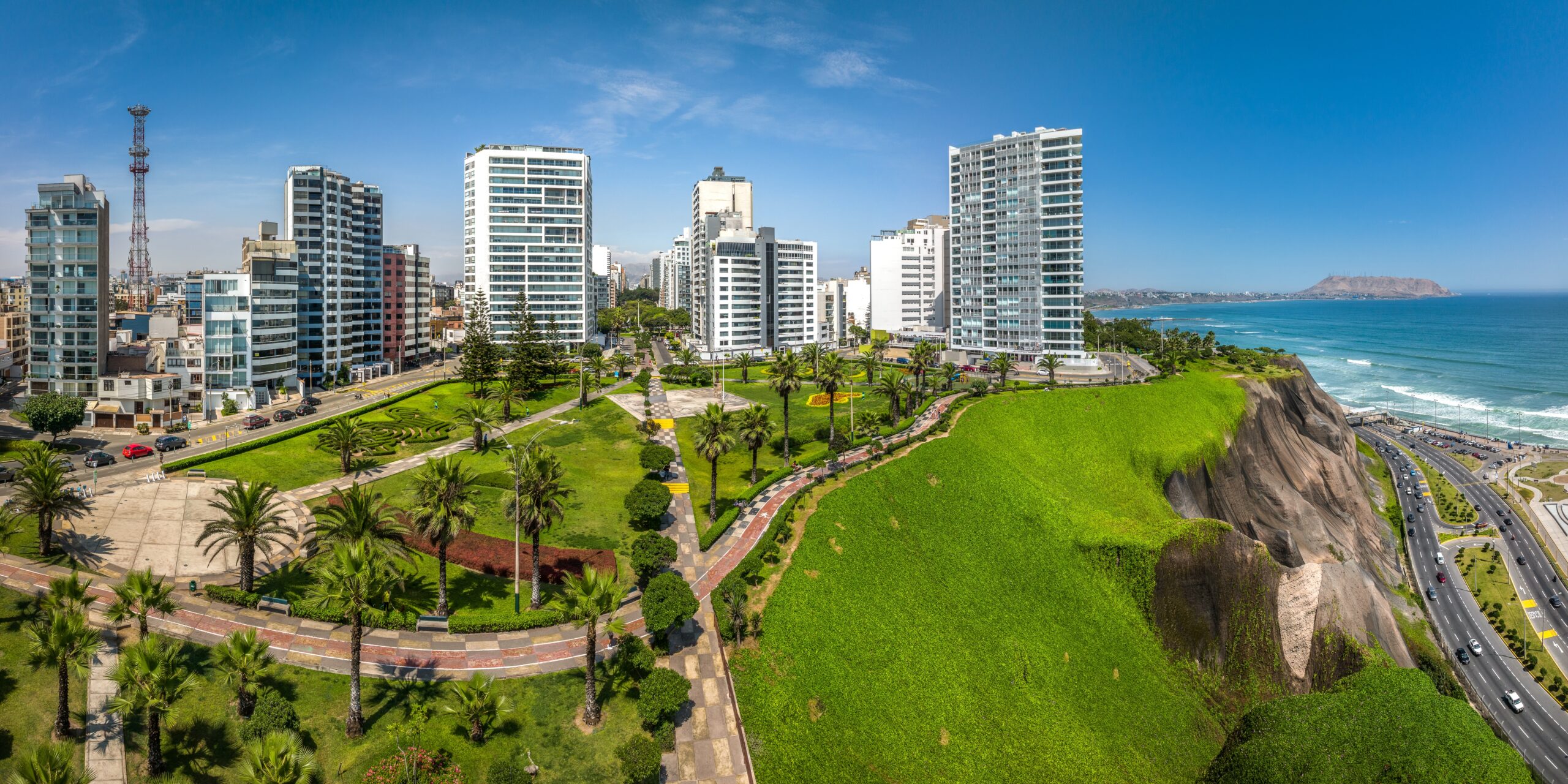




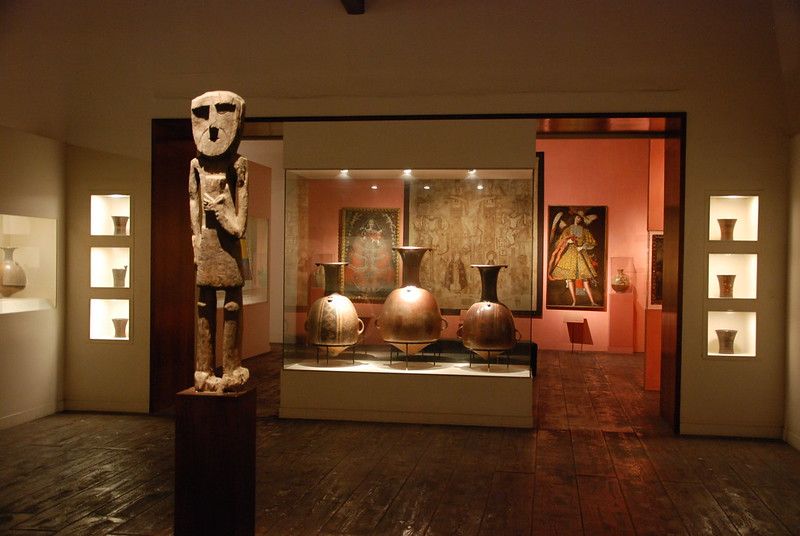

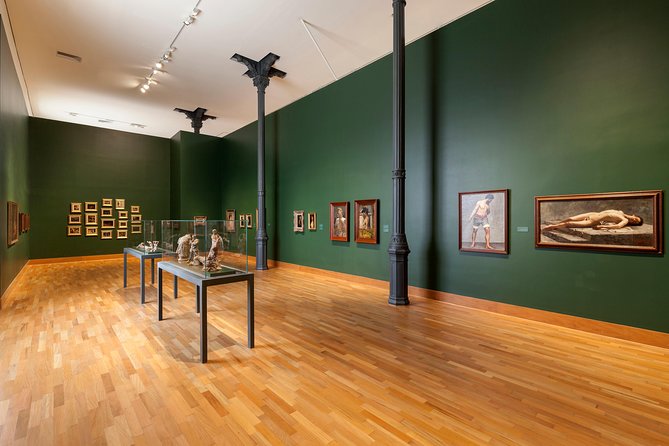
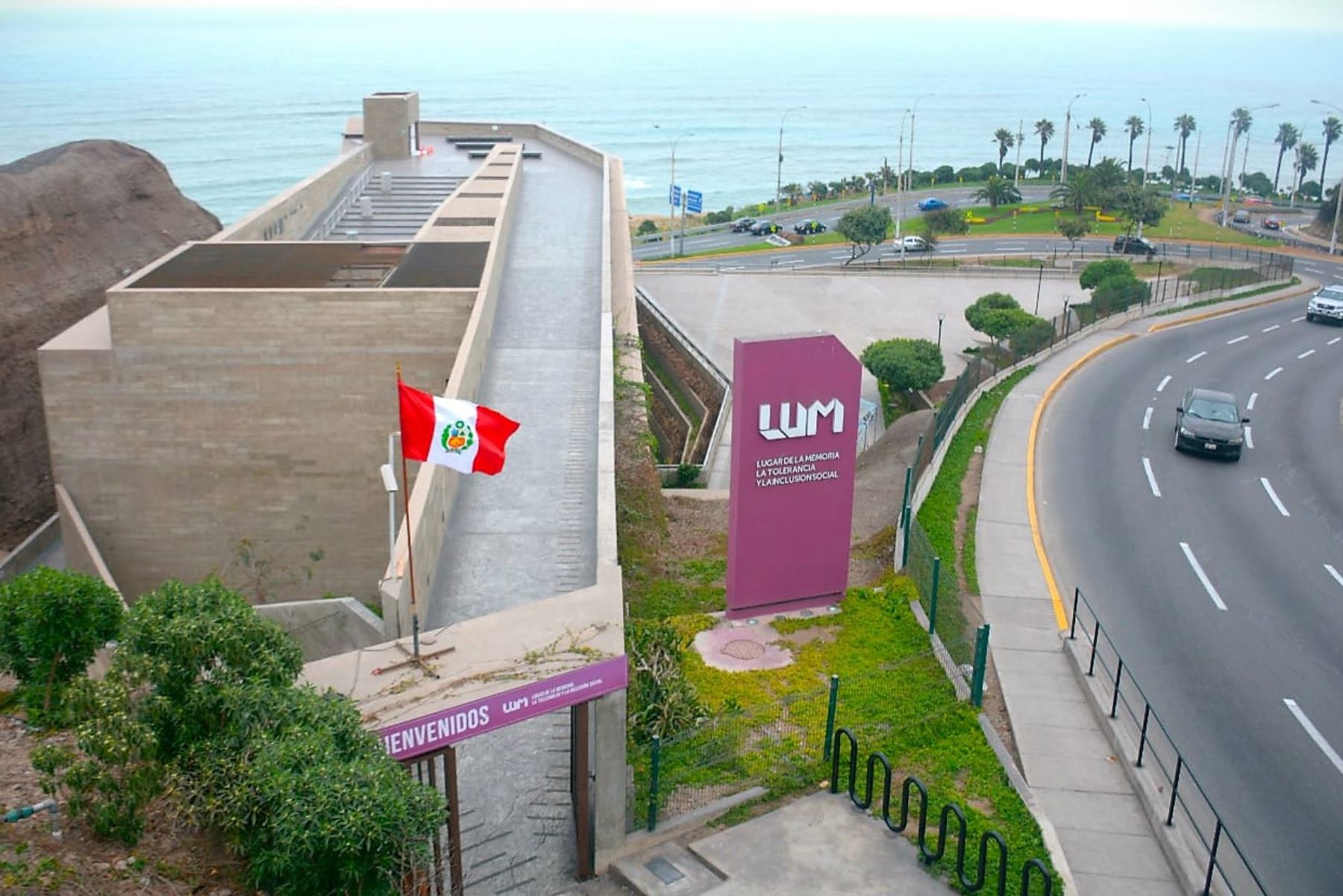

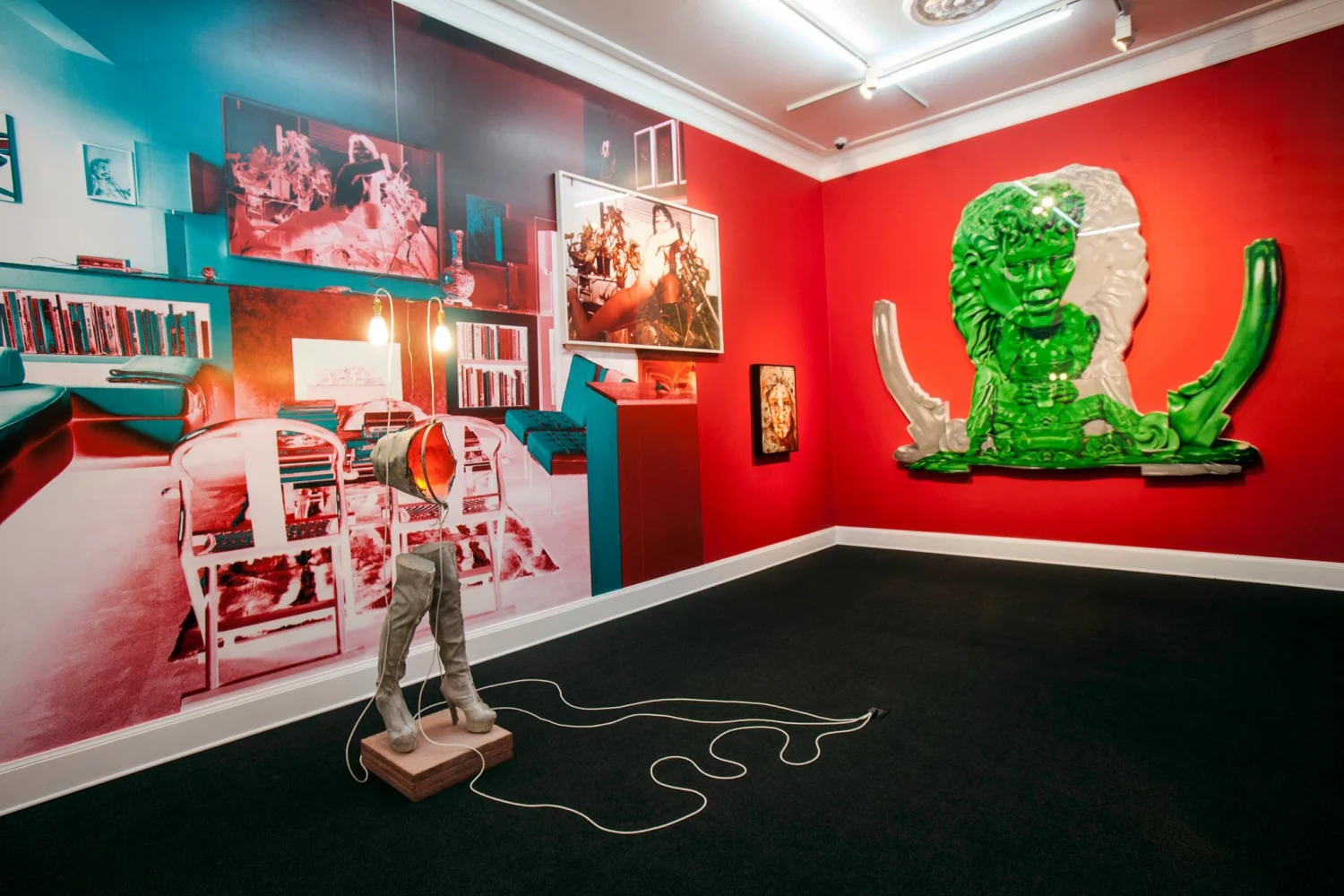

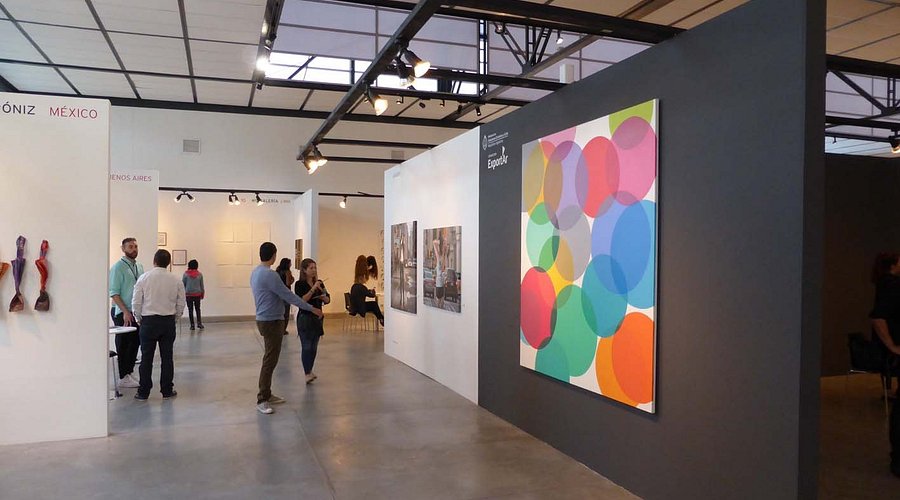

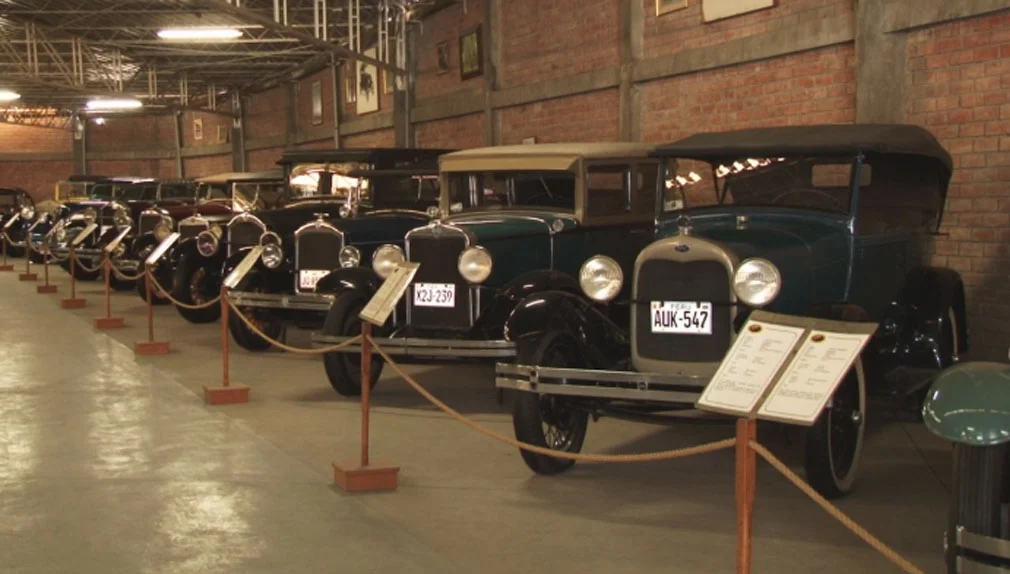

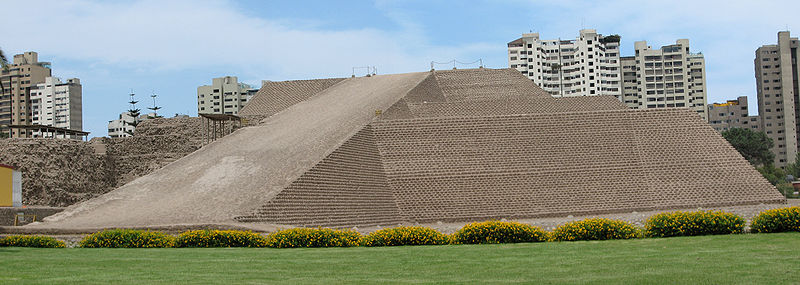
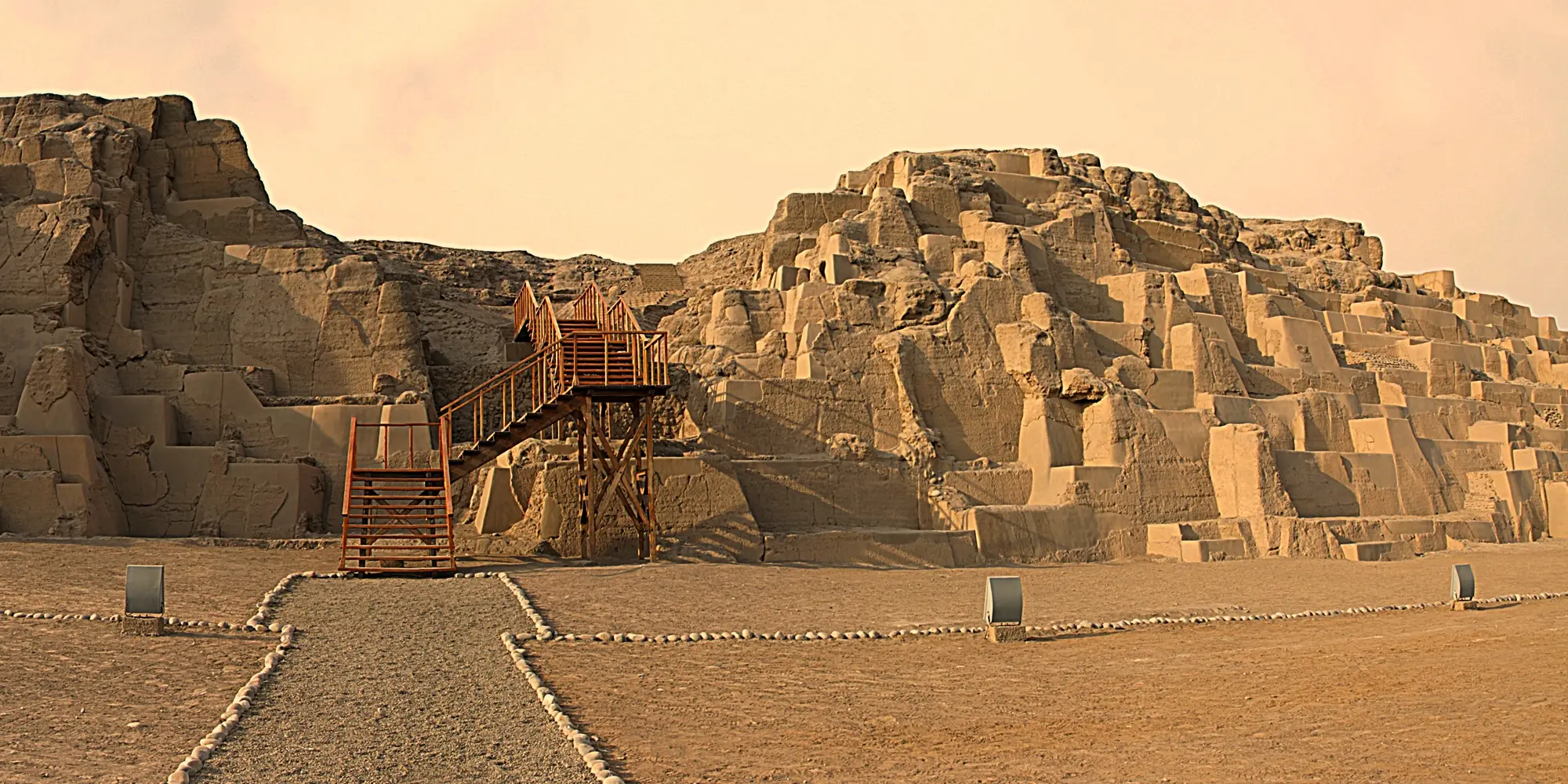
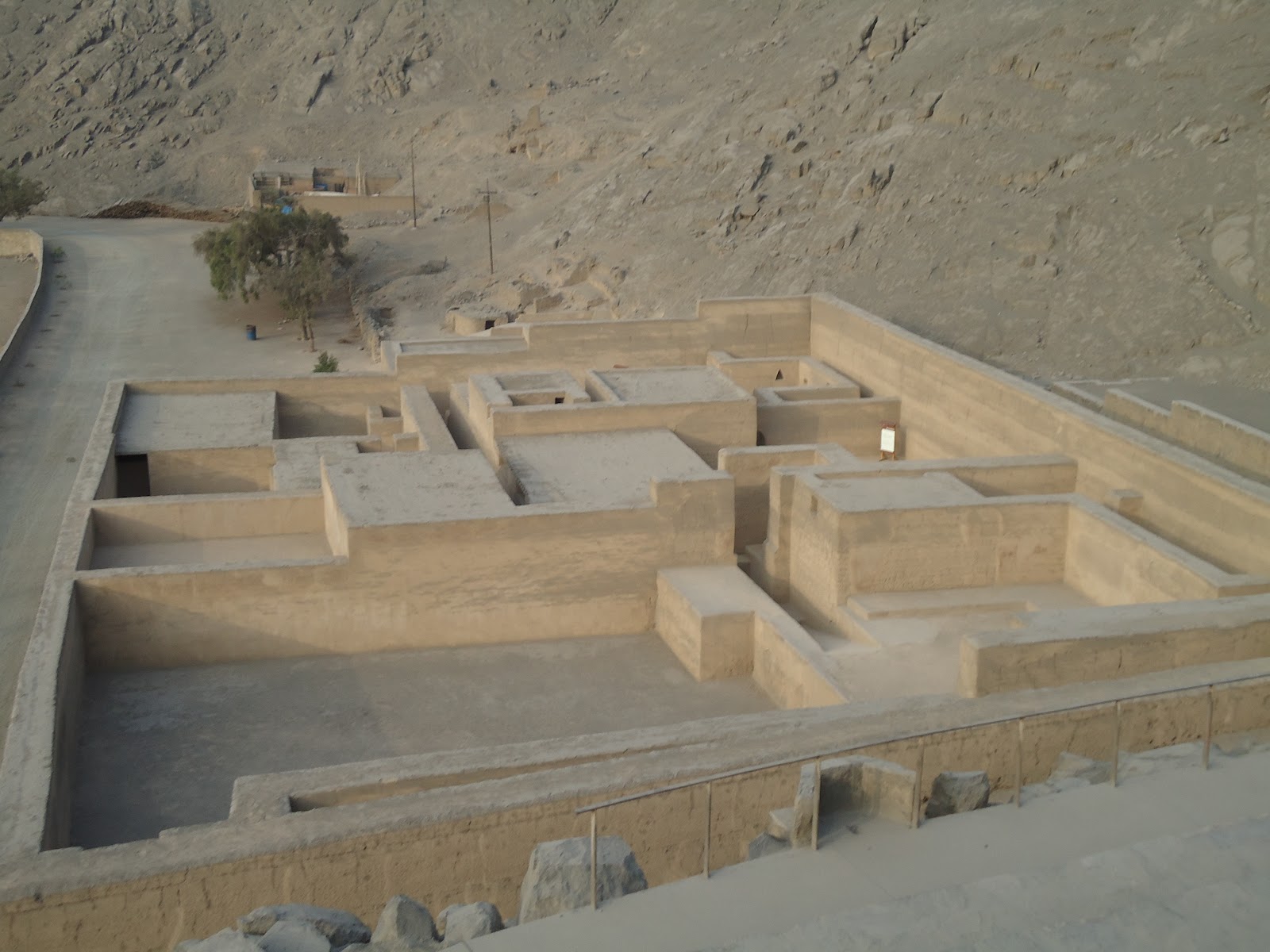


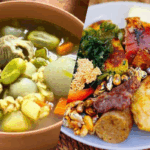

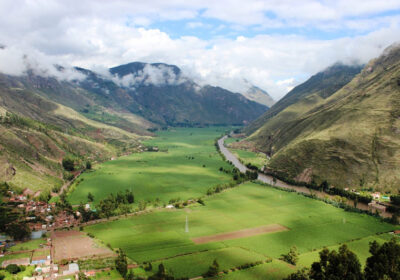

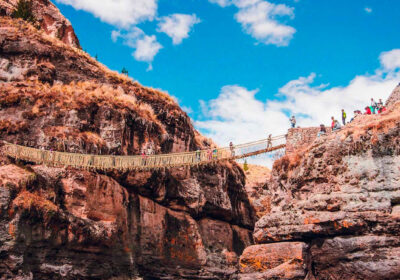
No Comment! Be the first one.